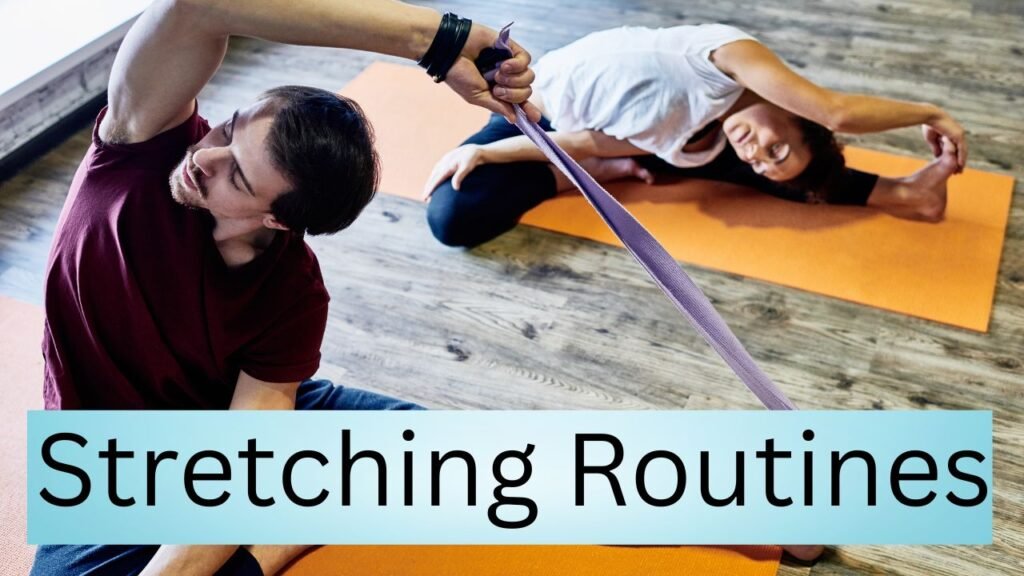Stretching is an essential part of maintaining a healthy, pain-free body. Whether you are an athlete, someone who sits at a desk all day, or simply looking to improve mobility, regular stretching can help increase flexibility and reduce tension. By incorporating effective stretching routines into your daily life, you can improve posture, prevent injuries, and enhance overall well-being.

Why Stretching Matters
Stretching helps keep muscles long, lean, and flexible. This is crucial for maintaining a full range of motion in your joints. Without stretching, muscles can become tight and shortened, leading to discomfort, stiffness, and an increased risk of injuries. Stretching also improves circulation, reduces stress, and promotes relaxation.
Key Benefits of Stretching
- Enhances Flexibility – Regular stretching increases your range of motion, making everyday movements easier and more fluid.
- Reduces Muscle Tension – Stretching helps relieve tightness, especially in areas prone to stiffness like the back, neck, and shoulders.
- Improves Posture – Tight muscles contribute to poor posture. Stretching helps realign the spine and balance muscle tension.
- Prevents Injuries – Flexible muscles are less likely to strain or tear during physical activities.
- Boosts Circulation – Stretching improves blood flow, delivering oxygen and nutrients to muscles while reducing soreness.
- Relieves Stress – Stretching promotes relaxation by releasing muscle tension and calming the nervous system.
Best Stretching Routines for Flexibility & Tension Relief
1. Dynamic Stretching (Before Activity)
Dynamic stretching involves controlled, gentle movements to prepare your muscles for physical activity. These stretches increase blood flow and improve mobility without causing strain.
Examples:
- Arm Circles – Extend arms to the sides and make small circles, gradually increasing in size.
- Leg Swings – Hold onto a stable surface and swing one leg forward and backward, then side to side.
- Torso Twists – Stand with feet shoulder-width apart and rotate your torso gently from side to side.
2. Static Stretching (Post-Activity or Daily Routine)
Static stretching involves holding a stretch for a prolonged period, helping muscles relax and lengthen. These stretches are ideal after exercise or as part of a daily routine to maintain flexibility.
Examples:
- Hamstring Stretch – Sit on the floor with one leg extended, reach forward to touch your toes, and hold.
- Quadriceps Stretch – Stand on one leg, grab your opposite ankle, and pull it towards your glutes.
- Seated Forward Fold – Sit with both legs extended, reach forward, and try to touch your toes.
3. Yoga-Based Stretching
Yoga stretches enhance flexibility while promoting relaxation and stress relief. Incorporating yoga poses into your routine can help release deep-seated tension and improve mobility.
Examples:
- Downward Dog – Start in a plank position, lift your hips towards the ceiling, and press your heels towards the ground.
- Cat-Cow Stretch – On all fours, alternate between arching your back (cow) and rounding it (cat) to improve spinal flexibility.
- Child’s Pose – Sit back on your heels, extend your arms forward, and rest your forehead on the floor for a deep back and hip stretch.
4. PNF Stretching (Proprioceptive Neuromuscular Facilitation)
PNF stretching is an advanced technique that involves contracting and relaxing muscles to achieve deeper flexibility. This method is often used by athletes and physical therapists to enhance muscle elasticity.
Example:
- Hamstring PNF Stretch – Lie on your back, raise one leg, push against resistance (a partner or band), then relax and stretch further.
Tips for Safe & Effective Stretching
- Warm Up First – Never stretch cold muscles. Engage in light movement like walking or jogging before stretching.
- Breathe Deeply – Inhale and exhale slowly to enhance relaxation and deepen each stretch.
- Hold Stretches for 15-30 Seconds – Avoid bouncing; instead, hold each position to allow the muscle to lengthen gradually.
- Stretch Both Sides Equally – Balance flexibility on both sides of your body to prevent muscle imbalances.
- Listen to Your Body – Stretching should never be painful. If you feel sharp discomfort, ease up to prevent injury.
- Make It a Habit – Consistency is key. Stretch daily, especially if you experience stiffness from prolonged sitting or strenuous activity.
Conclusion
Stretching is one of the most effective ways to improve flexibility and reduce muscle tension. Whether you engage in dynamic, static, or yoga-based stretching, making it a regular part of your routine can enhance mobility, prevent injuries, and relieve stress. By following proper techniques and staying consistent, you can enjoy a more flexible, pain-free body and improved overall well-being.